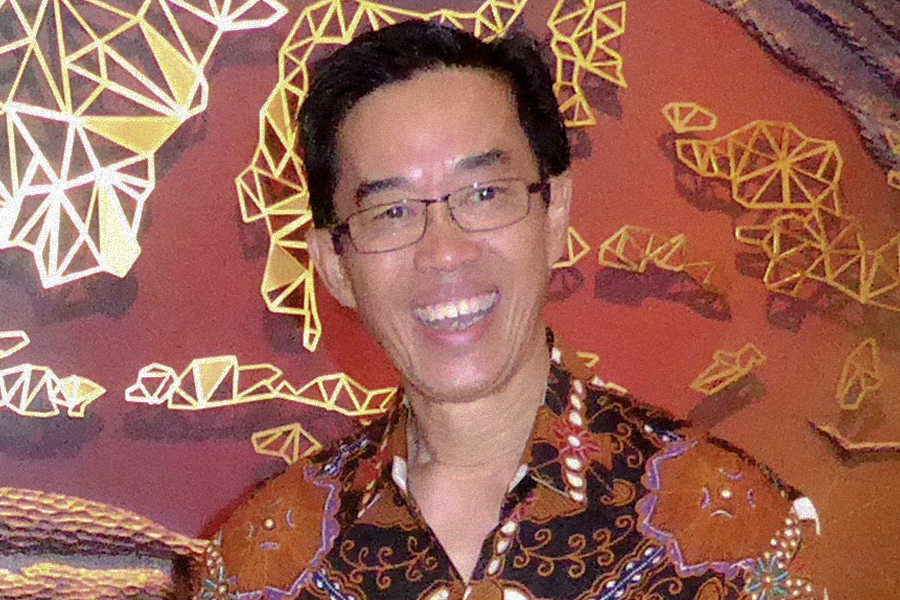
Indonesia’s state-owned electricity company, PT Perusahaan Listrik Negara (PLN) serves 75 million customers, more than the population of many countries. This giant power provider now has the urgent mission to bring electricity to every last corner of this populous nation despite the challenges posed by archipelagic geography. PLN is also at the forefront of the effort to upgrade Indonesia’s power system by embracing renewable energy sources, a move that is creating numerous investment opportunities in areas such as geothermal power and floating solar plants. Zulkifli Zaini, the head of PLN, discusses his vision for Indonesia’s energy future
One of your subsidiaries has signed a deal with Abu Dhabi’s Masdar for the development of a floating solar photovoltaic power plant. How is this project going to increase bilateral ties with the United Arab Emirates?
I think the cooperation between Masdar and PLN is a symbol of how these two flagship companies can work together on electricity projects, especially on renewables. It also symbolizes the larger relationship between the UAE and Indonesia.
Can you give us some details about the floating solar photovoltaic power plant project?
It is going to be built on a 225-hectare area inside the Cirata Reservoir, in West Java, and it will be the first floating photovoltaic cell project in Indonesia. The Cirata floating PV project is a monumental renewable energy project for Indonesia, and will be one of the biggest floating PV plants in Southeast Asia. It will improve the capability of the Jawa-Bali power system and also increase the renewable energy mix in Indonesia. It is a 145MW plant with a cost of $129 million, and we hope that the financial aspects will be closed in one year and construction completed two years after that, so we are looking at three years in total for completion.
How will this project aid Indonesia’s effort to create solar floating energy?
We would like to have success with this first project, but more importantly we want to see this cooperation extended to other projects in Indonesia. Our country consists of more than 17,000 islands, 521 natural lakes and more than 100 reservoirs. This is a country with so many dams and lakes that there is great potential for floating solar CV technology. We have identified at least 10 dams and over 100 lakes that can be used to develop floating solar plants. The potential for floating PV in Indonesia is endless because the archipelago nation’s geography makes it ripe for development, but we must be able to execute this project successfully first.
There is also a lot of talk about opportunities in geothermal energy. What projects are currently available?
There are many geothermal opportunities because Indonesia is located on the Pacific Ring of Fire, which means there is potential for geothermal energy everywhere. Investors can choose to cooperate with PLN or work as an independent power producer (IPP), and the government is being supportive because this is a renewable energy and Indonesia has set a target to generate 23% of its energy mix from renewables by 2025.
What is your vision as head of one of the largest electricity companies in the world?
Indonesia has 250 million people, and its future requires electricity – there is no future without it. Part of my vision is that I would like to improve the customer’s experience with our services because I know there is some criticism regarding our ability to supply reliable electricity to all individuals and industries, and we accept that. We have to improve the reliability of our supply, and we also have to support export-oriented companies located here. It is also my belief that no company is able to fulfil its mandate without strong financial performance, so PLN needs to be in a very healthy and sustainable financial condition. This means that we need to improve our financial condition in order to better serve our customers and support our mandate. We are also going to redouble our efforts to meet the government’s target of generating 23% of energy from renewables by 2025. Right now, the percentage is around 12%.
What are the challenges of electrifying an archipelago country like Indonesia?
It is a challenging job. We have to operate on thousands of small islands and remote areas, and in some parts, such as eastern Indonesia, the infrastructure is not so good, so it is not easy to reach that area. But our president has instructed us to reach 100% of the territory by the end of this year. In western Indonesia this might not be so difficult, but in eastern Indonesia it is. We have identified 423 small villages in Papua that have had no electricity since the time of independence.
How can UAE investors help you overcome these challenges?
We would like cooperation with financing in order to achieve our goals, and of course we would like to see technology transfer such as smart meters and smart microgrids that could improve customer experience and the efficiency of our own supply. In general, PLN is open to opportunities with any partner willing to develop electricity in Indonesia. PLN has a subsidiary to develop geothermal power plants, and there is an opportunity there to become partners in these projects. Indonesia is a big country with a lot of land and a young population, and there is plenty of opportunity all around. The UAE can support Indonesia’s sustainable energy goals. Innovative solutions will be critical to the nation in achieving its renewable energy targets and to bolstering sustainable economic growth.